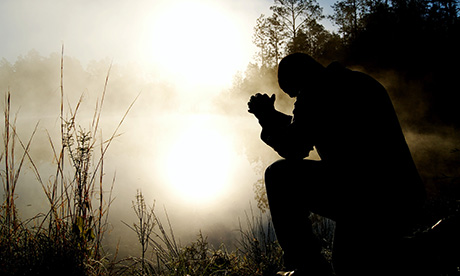We don’t ask enough questions.
Sometimes that is because we feel we should know the answers and don’t wish to appear stupid. In fact, many others also wish to ask the same question but, for similar reasons we all keep our lips tightly closed.
That is a pity, for being inquisitive is the start of a journey in understanding.
In a recent posting on the Irish website of the Association of Catholic Priests (ACP), Seamus Ahearne, a parish priest in Dublin, wrote:
But what is prayer?
- It is the taking off of shoes.
- It is the burning bush.
- It is the gentle breeze.
- It is the awareness of nature.
- It is gratitude.
- It is beauty.
- It is wonder.
- It is the poetry of the soul. It is the music of life.
- It is awesomeness.
- It is kindness.
- It is goodness.
- It is gentleness.
- It is the eyes of the heart and imagination open to whisper – “thank you”.
- It is the big heart of laughter.
- It is the touch of comfort.
- It is the warmth of love.
- It is the awareness of the uniqueness and mystery of a little life.
- It is finding a Tent of Meeting.
- It is any old mountain that gives a view.
The question he posed is one that we have all grappled with at various times, coming up with a multitude of answers, some of them wide of the mark. Honest attempts maybe.
But limited in their usefulness. In a few words, Seamus Ahearne opens a door and offers a joyful mix of meaning for us to explore.
Prayer is a rich vein that runs through all our lives and finds expression in so many ways.
Too often we have a narrow view, both in the words used and the place chosen.

Yet even in a cursory reading of the ACP excerpt we are offered a breadth of understanding that goes beyond our usual perceptions.
Our posture in prayer says much about our understanding and appreciation at different times. We either sit or kneel or stand, we join our hands together or open our palms in a gesture of reception. We bow low or remain still and motionless.
With others we use words that are a common currency. Alone we may utter only the occasional phrase or just remain silent, in reflective listening.
There is no “one right way”, but an “every way” that responds to circumstance of place or mood.
The psalmist asks us to be still and know that God is with us. There is a personal awareness in prayer that we are not alone, that our singularity in space is forever surrounded by the presence of God. Prayer is our response to God who creates us day by day.
“Pray to learn how to pray”
Often during our celebration of the Eucharist, we are offered the invitation, “Let us pray.” And we dutifully stand for the public words of prayer.
Yet each of us reflects and responds in a personal, individual way to what follows. Bound in community by our Christian faith, we are none the less singular in our love for God and his love for us.
We often ask each other for prayers, seeking the support of friends in their time of prayer. It reminds us that we are part of a greater whole.
In one of his journals, Thomas Merton writes that we should “pray to learn how to pray”. It is a task, a work of the journey that each one of us is undertaking.
“Prayer and love are learned in the hour when prayer has become impossible and hearts have turned to stone,” Merton observed.
In the first Chapter of Mark’s Gospel we are told the following: “Very early in the morning, while it was still dark, Jesus got up, left the house and went off to a solitary place, where he prayed.”
That reflection of a solitary place and the dawn of a new day offers an example of prayer at a particular time and in a chosen circumstance.
Each to their own way.
“Most of the time, we are lost in the past or carried away by the future. When we are mindful, deeply in touch with the present moment, our understanding of what is going on deepens, and we begin to be filled with acceptance, joy, peace and love,” notes the Buddhist monk, Thich Nhat Hanh.
We are not clones reacting in identical ways. Our own struggles with prayer are personal.
Yet we can help each other in so many ways, one of them by just being there.
I still remember my Godmother, Jenny, who often took me to Mass on a Sunday. She taught me so much about prayer, not by telling me the words to use but by showing me how she prayed.
We teach each other by being who we are.
- Chris McDonnell is a former headteacher from England and a regular contributor to La Croix International.
- First published in La Croix International. Republished with permission.
News category: Analysis and Comment.




